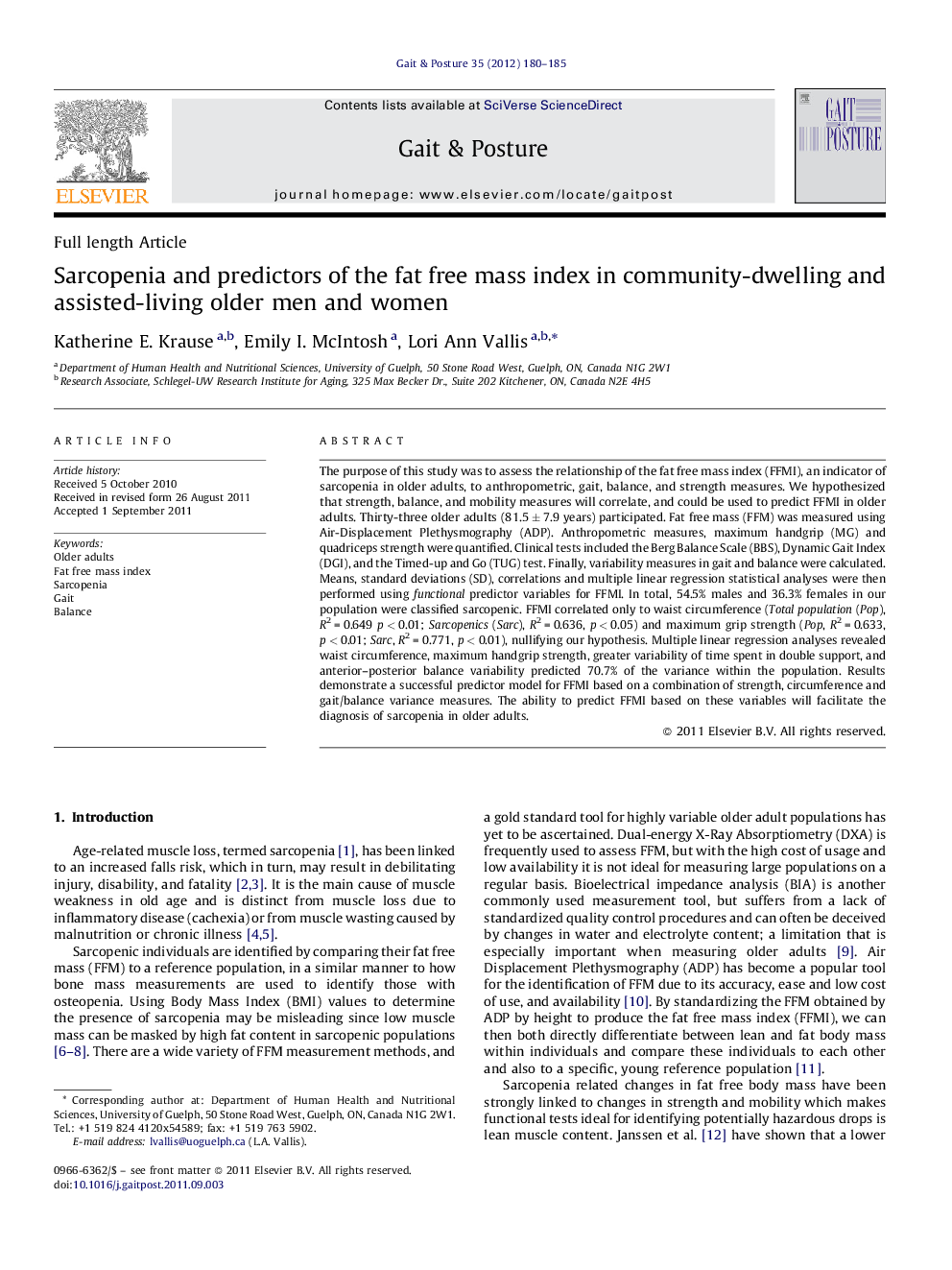| کد مقاله | کد نشریه | سال انتشار | مقاله انگلیسی | نسخه تمام متن |
|---|---|---|---|---|
| 6208103 | 1265673 | 2012 | 6 صفحه PDF | دانلود رایگان |

The purpose of this study was to assess the relationship of the fat free mass index (FFMI), an indicator of sarcopenia in older adults, to anthropometric, gait, balance, and strength measures. We hypothesized that strength, balance, and mobility measures will correlate, and could be used to predict FFMI in older adults. Thirty-three older adults (81.5 ± 7.9 years) participated. Fat free mass (FFM) was measured using Air-Displacement Plethysmography (ADP). Anthropometric measures, maximum handgrip (MG) and quadriceps strength were quantified. Clinical tests included the Berg Balance Scale (BBS), Dynamic Gait Index (DGI), and the Timed-up and Go (TUG) test. Finally, variability measures in gait and balance were calculated. Means, standard deviations (SD), correlations and multiple linear regression statistical analyses were then performed using functional predictor variables for FFMI. In total, 54.5% males and 36.3% females in our population were classified sarcopenic. FFMI correlated only to waist circumference (Total population (Pop), R2 = 0.649 p < 0.01; Sarcopenics (Sarc), R2 = 0.636, p < 0.05) and maximum grip strength (Pop, R2 = 0.633, p < 0.01; Sarc, R2 = 0.771, p < 0.01), nullifying our hypothesis. Multiple linear regression analyses revealed waist circumference, maximum handgrip strength, greater variability of time spent in double support, and anterior-posterior balance variability predicted 70.7% of the variance within the population. Results demonstrate a successful predictor model for FFMI based on a combination of strength, circumference and gait/balance variance measures. The ability to predict FFMI based on these variables will facilitate the diagnosis of sarcopenia in older adults.
Journal: Gait & Posture - Volume 35, Issue 2, February 2012, Pages 180-185